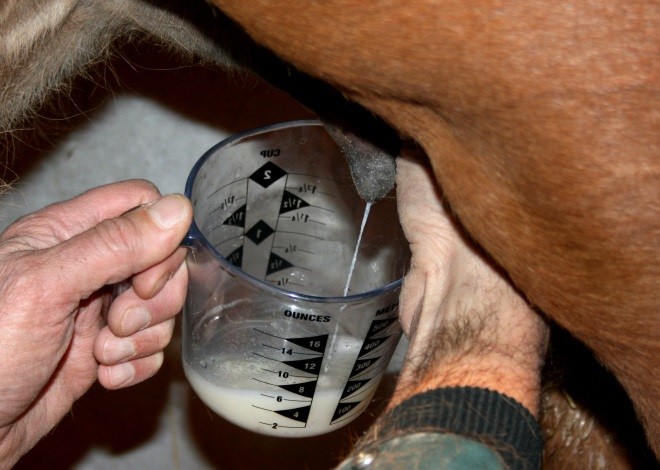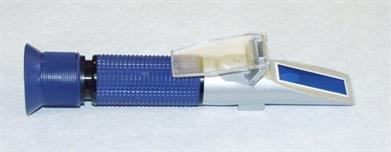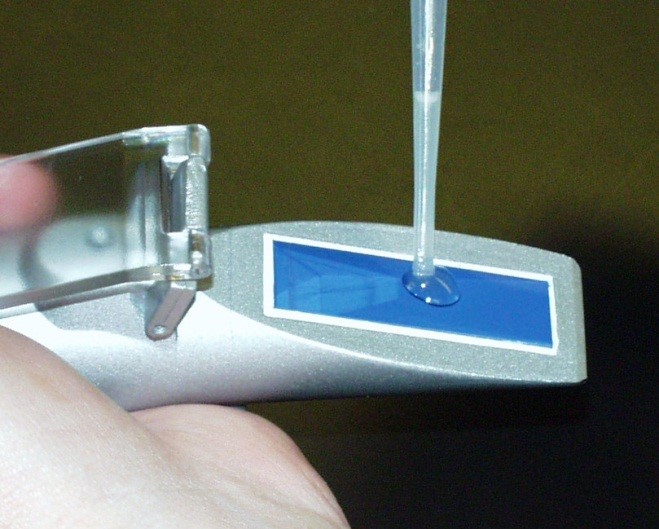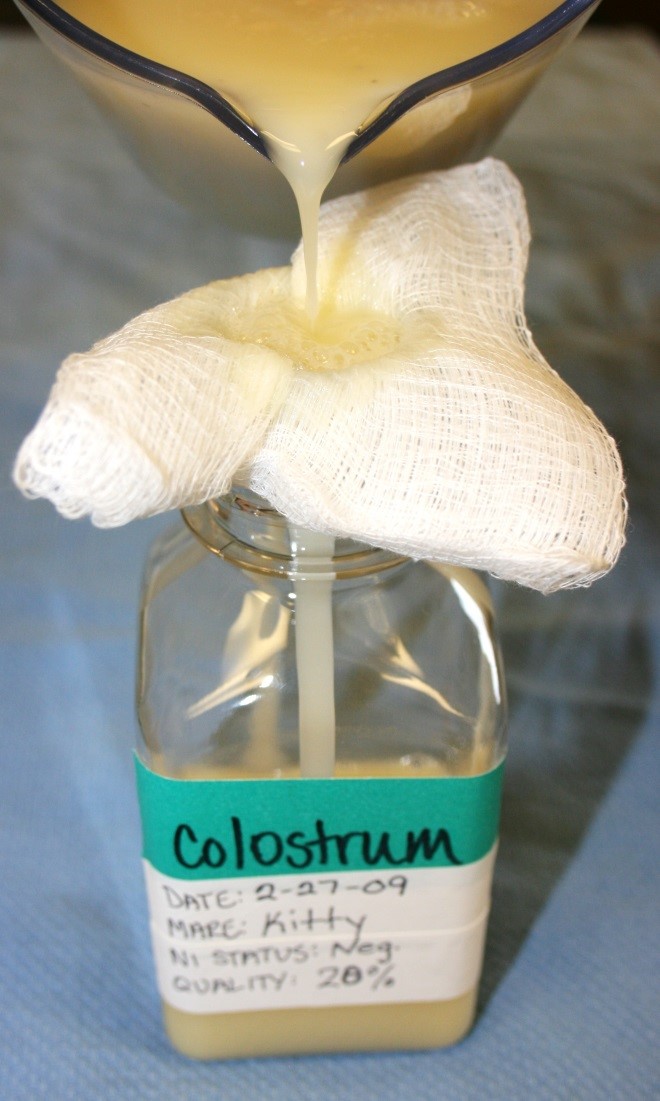Colostrum 101
By Patrick M. McCue, DVM, PhD, Diplomate American College of Theriogenologists
Colorado State University
Colostrum is the thick, sticky yellow fluid produced by the mammary gland of the mare during the last few weeks of pregnancy. It is comprised of carbohydrates, fats, proteins and electrolytes. Colostrum is rich in antibodies that are critically important for immune protection of the newborn foal. The process by which foals acquire antibodies from the colostrum of their dam is called ‘passive transfer of immunity’.
The epitheliochorial-type placenta of the horse prevents in utero transfer of antibodies from the mare to the fetus. As a consequence, foals are born without any antibody protection. The newborn foal is thus entirely dependent on antibodies from colostrum for protection against infection during the early neonatal period.
The mammary gland selectively concentrates antibodies (primarily IgG class and some IgM class antibodies) from the blood of the mare during the last two to three weeks of pregnancy. The mammary gland is capable of directly producing some IgA class antibodies that are found in colostrum. The average IgG concentration in equine colostrum is approximately 7,000 mg/dl (70 g/L) and ranges from 3000 to 12,000 mg/dl (30 to 120 g/L).
Under normal circumstances, a foal will stand and nurse within 1-2 hours after it is born. Specialized enterocyte cells lining the small intestine absorb colostral antibodies by a process termed pinocytosis. The enterocytes engulf droplets of colostrum from the intestinal lumen, transfer the droplets in small vacuoles across the cell and then discharge the contents into lymphatic vessels. The lymphatics subsequently transport the antibodies to the blood stream.
The capacity of the small intestine to absorb and transfer antibodies is greatest during the first 6-8 hours after birth. It declines substantially after 12 hours and within 24 hours after birth the specialized intestinal cells are replaced by cells incapable of transferring antibodies. Consequently, ingestion of colostrum by the foal after 24 hours of age will not result in an increase in blood antibody levels.
Foals need to ingest approximately two to three liters of good quality colostrum within the first few hours of life to acquire sufficient antibodies to protect against infectious diseases.
Mares produce colostrum only once in the course of a pregnancy. Colostrum is rapidly depleted as the foal nurses throughout the first day of life. Within 24 hours after foaling, the mammary gland no longer contains colostrum and the milk produced thereafter does not contain high concentrations of antibodies.
Mares that leak colostrum prior to foaling can also lose a majority of the antibody rich fluid before the foal can have a chance to nurse. Consequently the foal may not ingest and absorb sufficient antibodies to gain immune protection from microorganisms in the environment.
Evaluation of Colostrum Quality
Evaluation of mare colostrum immediately after foaling and prior to nursing can be helpful in predicting if failure of passive transfer is likely to occur. This is especially true in situations in which colostrum has been lost due to premature leakage from the mammary gland, or if the colostrum quality is poor. Evaluation of colostrum is also valuable in determining the quality of colostrum to be harvested and stored in a colostrum bank.
Quantitative measurement of IgG levels in colostrum can be obtained by a radial immunodiffusion (RID) assay. Unfortunately, the RID technique is not a test that can be performed easily on a farm and takes approximately 24 hours to obtain results. Qualitative assessment of colostrum can be performed using a Brix refractometer to evaluate optical density or a colostrometer to determine specific gravity. Specific gravity and optical density are correlated with antibody (IgG) content of colostrum.
Equine Colostrum Refractometer (Brix)
Refractometry measures the concentration of dissolved solids in a solution. To evaluate colostrum using the equine colostrum refractometer, a small amount of colostrum is collected (Figure 1), and one to two drops are placed on the prism (Figures 2 and 3) and the daylight plate is closed. Closure of the daylight plate spreads the colostrum evenly across the prism. The refractometer is held in the direction of a light source and the deviation or refraction of light is evaluated on a scale as a percentage score (Figure 4). The level or location of the color (blue) on the scale is determined. The scale contains graduations (%) and a quality assessment score for accurate interpretation.
Article
Figure 1. Collection of colostrum sample.
Figure 8. Filtering colostrum using gauze to remove debris.
Frozen colostrum should be thawed in a water bath at room temperature. Thawing in hot water or in a microwave will destroy the antibodies and render the colostrum useless. It is recommended that colostrum be administered immediately after thawing.
Related Products from this article:
ARS Equine Colostrum Refractometer
Colostrum Storage Bottles
Udderly EZ™ Milker
.
Figure 2. Equine Colostrom Refractometer
Figure 3 Placement of a drop of colostrum on prism of the refractometer.
Figure 4. Evaluation of the percent score and quality grade on the scale visible through the eyepiece. The Brix score for this colostrum is 21.5 %.
Colostrum with a low amount of dissolved solids (i.e. low IgG level) will have a lower amount of light scatter and a lower percentage score. Colostrum with high amounts of dissolved solids (i.e. high IgG levels) will cause more light scatter and therefore have a higher percentage score. Refractometer evaluation of equine colostrum has been shown to be highly repeatable and highly correlated with IgG levels as measured by the radial immunodiffusion assay.
Specific Gravity
The specific gravity or density of equine colostrum can be determined by use of a colostrometer. Colostrum with high IgG levels has a greater density and therefore a higher specific gravity. A volume of exactly 15 mls is added to the glass chamber. The colostrum-filled chamber is then placed in a graduated cylinder containing distilled water and allowed to float. The specific gravity of the colostrum is measured by reading the scale on the glass cylinder. Colostrum with a specific gravity level of < 1.06 is considered poor. Colostrum with a specific gravity of > 1.08 is considered very good. Determination of the specific gravity of equine colostrum is dependent on accurate measurement of an exact volume (15 mls) of colostrum. Small errors in volume measurement lead to inaccuracy of specific gravity determination.
Interpretation and Colostrum Management
The relationship between refractometry percentage, specific gravity and overall colostrum quality assessment is presented in the table below:
Table 1. Interpretation of colostrum quality using a Brix refractometer or a colostrometer.
| Colostrum Quality |
Brix (%) |
Specific Gravity |
| Very Good |
> 30 |
= 1.10 |
| Good |
20 - 30 |
1.08 - 1.09 |
| Fair |
15 - 20 |
1.06 - 1.07 |
| Poor |
< 15 |
< 1.06 |
Successful passive transfer of antibodies from the mare to her foal depends on many factors, including quality and quantity of colostrum, timing of the ingestion of colostrum, health status of the foal, and absorption of antibodies by the small intestine.
Assessment of colostrum quality evaluates only one component of the passive transfer process. However, if it can be determined that the quality of the colostrum produced by a mare is inadequate, the foal can be supplemented with additional frozen-thawed colostrum of good quality or with an oral colostrum substitute containing equine antibodies.
Colostrum Bank
An owner or farm manager generally does not know in advance which foal will need supplemental colostrum. An on-site supply of frozen colostrum can be critical for the health of a valuable neonate.
The best colostrum donors are mares that have had one or more foals and are 4-15 years of age. Vaccination 4 to 6 weeks prior to foaling will increase antibody content of colostrum and consequently increase the quality of colostrum to be collected for storage. Colostrum volume and quality are not as good from young maiden mares or older mares. Mares that have dripped milk for several hours prior to foaling may not have a large volume of good quality colostrum remaining in their udder and may not make suitable donors for a colostrum bank. Colostrum should not be saved from a mare with a history of having a foal affected by neonatal isoerythrolysis (NI or Jaundice Foal Syndrome) or that died from unknown causes within the first few days after birth.
Good quality colostrum is thick, yellow in color and sticky in texture. Poor quality colostrum is often watery, white in color and non-viscous in texture. Good colostrum has a Brix score of ³ 23 % and a specific gravity of > 1.06.
Ideally, colostrum to be banked should also be tested for the presence of anti-RBC antibodies, to prevent the possibility of inducing neonatal isoerythrolysis in a foal receiving stored colostrum.
The technique for harvesting colostrum for banking is relatively simple. The udder of the mare should be washed with warm water and soap to remove debris and bacteria (Figure 5). It is recommended that colostrum be collected from one side of the mammary gland from a donor mare in the first hour after foaling before her foal has nursed. A total of 8 to 16 oz may be safely harvested from the mare without adversely affecting the ability of the newborn foal to acquire sufficient colostrum for adequate passive transfer of antibodies.
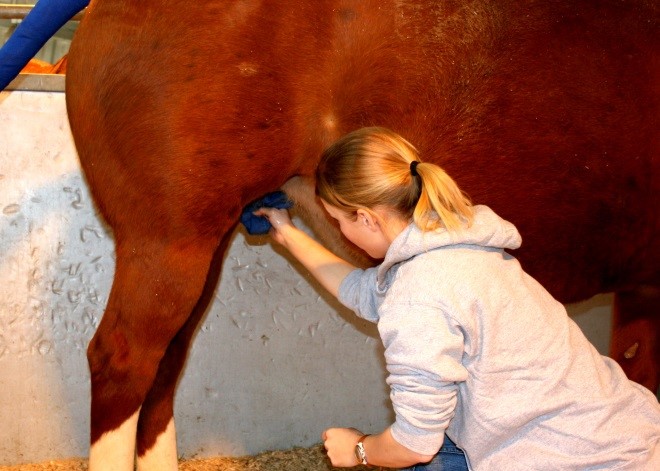
Figure 5. Washing the udder of a mare prior to collection of colostrum.
Options for collecting colostrum include hand milking, using an inverted syringe, or using a commercial milking device. Stripping or milking colostrum by hand directly into a clean glass or plastic measuring cup 16 to 32 oz in capacity will make it easy to evaluate the volume that has been collected (Figure 6).
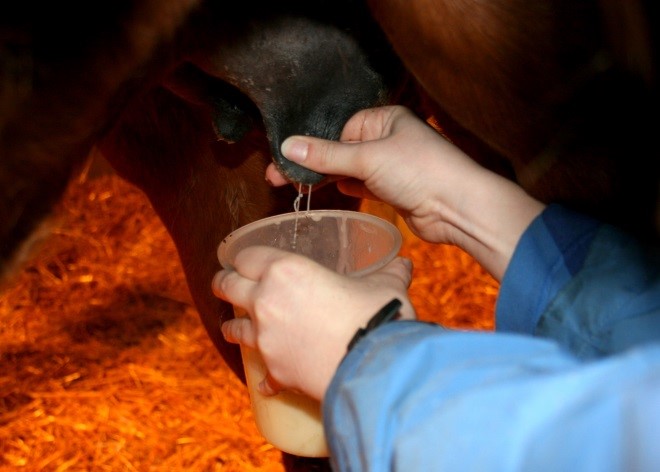
Figure 6. Harvesting colostrum by hand into a measuring cup.
Alternatively, colostrum can be harvested using an inverted 60 ml syringe as a simple milking device. To make the unit, cut the tip off of a 60 ml plastic syringe. Reverse the syringe plunger (i.e. insert the plunger into the end the tip was removed from) and place the flared end of the syringe over the mare’s teat snug against the udder. A gentle pull on the plunger will create suction and draw colostrum down into the syringe (Figure 7). The colostrum in the syringe is then transferred into a larger measuring cup and the process repeated until the desired volume is obtained.

Figure 7. Collection of colostrum using an inverted syringe.
Harvested colostrum should be passed through a gauze filter or new cheesecloth into a storage container (Figure 8). Colostrum should be stored in 8 to 16 oz plastic bottles labeled with the donor mare’s name, collection date and colostrum quality. Glass bottles or plastic freezer bags are not recommended for storage of frozen colostrum. Frozen equine colostrum can be safely stored for 1-2 years in a standard -20o C freezer. Colostrum should be harvested each breeding season to replenish the colostrum bank with a fresh supply.
Animal Reproduction Systems
800-300-5143


